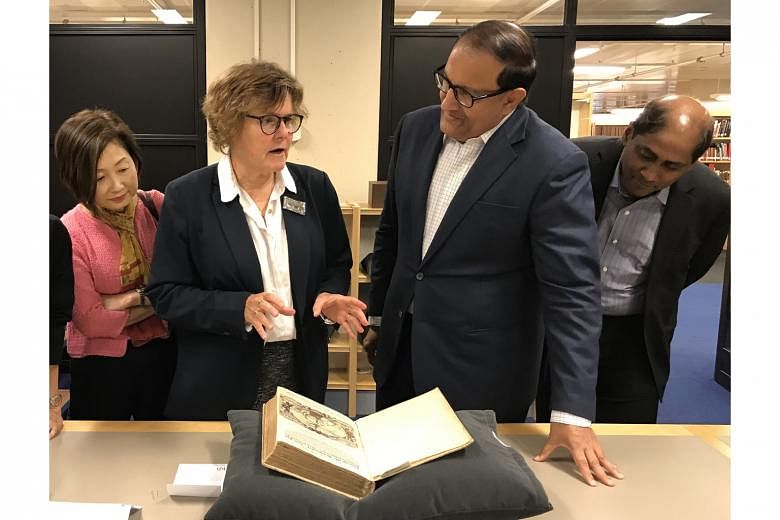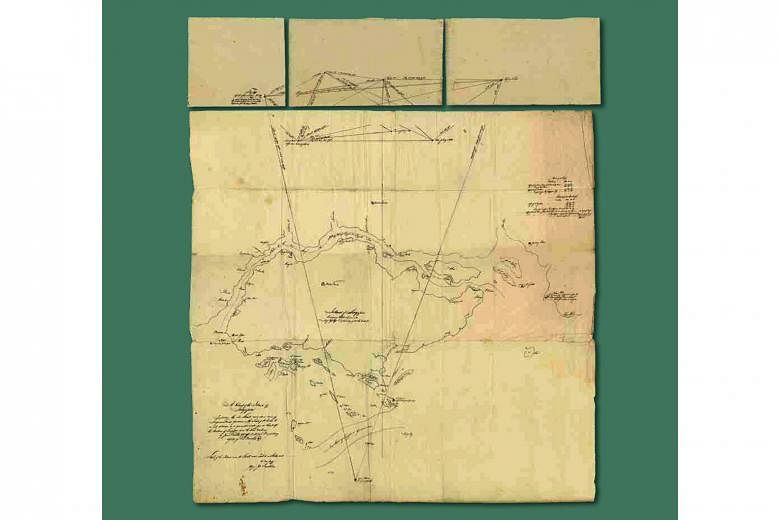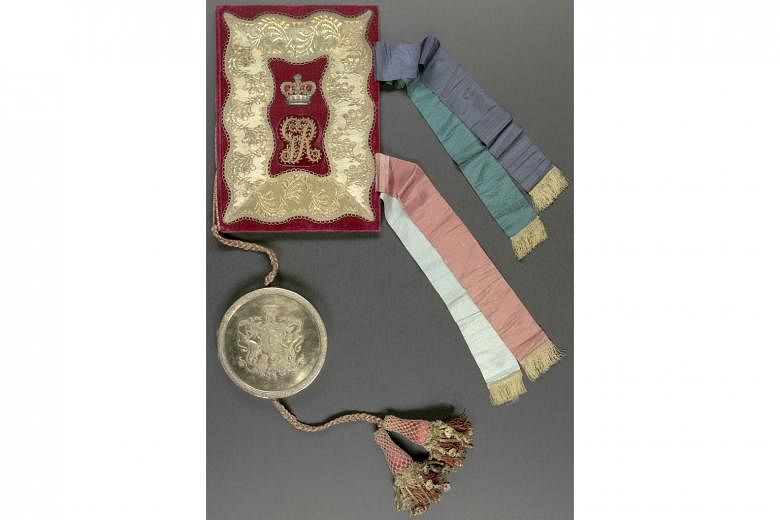The 1824 Anglo-Dutch Treaty, richly bound in red and gold, is one of the highlights of the upcoming On Paper: Singapore Before 1867 exhibition at the National Library.
The exhibition, which is on from Sept 28 till March 22 next year, is co-presented by the National Library and National Archives to mark Singapore's bicentennial commemoration. It will feature more than 100 items from the library and archive, as well as more than 50 items borrowed from overseas institutions.
The Treaty is one of four items on loan from the Nationaal Archief (National Archives of Netherlands). Also known as the London treaty, the agreement between the Dutch and the British was drawn up to settle disputes between the colonial powers in South-east Asia.
In it, the Dutch withdrew their objections to the British settlement in Singapore. Before this, the Dutch had considered the British agreement with Sultan Husain invalid as they did not regard him as the true sultan of Johor. The Dutch recognised their vassal Sultan Abdul Rahman as the Sultan of Johor and Singapore as part of his territory.
The other three documents on loan from the Archief are early maps of Singapore.
An 1822 hand-drawn map of Singapore by Captain James Franklin is the earliest record of Singapore's shape and size.
An 1823 pencil-drawn map depicts the settlement of Singapore, with dense buildings clustered on the north bank of the Singapore River. The south bank is labelled Campong China and the map also marks where Campong Glam and the Sultan's residence is located.
-
VIEW IT / ON PAPER: SINGAPORE BEFORE 1867
-
WHEN: Sept 28 to March 22
WHERE: Gallery, Level 10 National Library Building, 100 Victoria Street
ADMISSION: Free
INFO: www.nlb.gov.sg
The last map is of Asia, and has a pencil line running through the Melaka and Singapore Straits, from the north-western coast of Sumatra to the coast of Borneo. This mark was made by the Dutch chief negotiator of the treaty, Anton Reinhard Falck, to demonstrate how the region could be divided into two spheres of influences. The lands above the pencil line would go to the British while the Dutch would control the lands under.
These documents are part of the show's exploration of an underdocumented part of Singapore's history before 1867. That was the year the Straits Settlements, comprising Singapore, Malacca and Penang, became a Crown Colony under direct British control.
Other highlights in the exhibition include such documents as the Bute map from Scotland's Bute Archive, Tan Kim Seng's will and a rare narrative poem by a Malay writer on loan from the Bibliotheque Nationale de France.
The 1819 Bute Map is the earliest landward map of the British trading post and marks out the remnants of ancient settlements here. Tan's will, written in English, is unusual as the prominent businessman specifies that the money for his daughters were for their use and free from marital control. The poem, Syair Dagang Berjual Beli (Poem On Buying And Selling), depicts working and social life in Singapore circa 1830.
Minister for Communications and Information, Mr S. Iswaran, on a visit to three Dutch libraries and archives last week to learn about digital preservation and digital access, said in a statement: "As we mark Singapore's Bicentennial this year, it is important for Singaporeans to appreciate our shared histories and connections with other countries and societies."
He was accompanied on his visit by the National Library Board's (NLB) chief executive officer Elaine Ng and the National Library Singapore's director Tan Huism.
They also visited the Koninklijke Bibliotheek (National Library of the Netherlands) and the Nederlands Instituut voor Beeld en Geluid (Netherlands Institute for Sound and Vision), where they were shown historical records including correspondence and films related to Singapore.
The visits will allow the NLB to explore future collaborations, which could give Singaporeans more access to rare materials related to Singapore's history.
Minister Iswaran added: "Through this visit, we enhance greater collaborations between our libraries, archives and cultural institutions; allowing us to better understand our past and strengthen our relationships with other countries."




